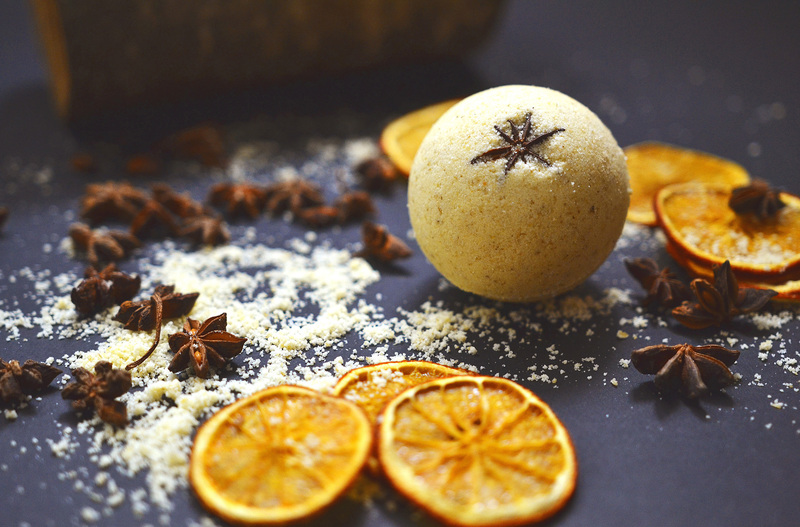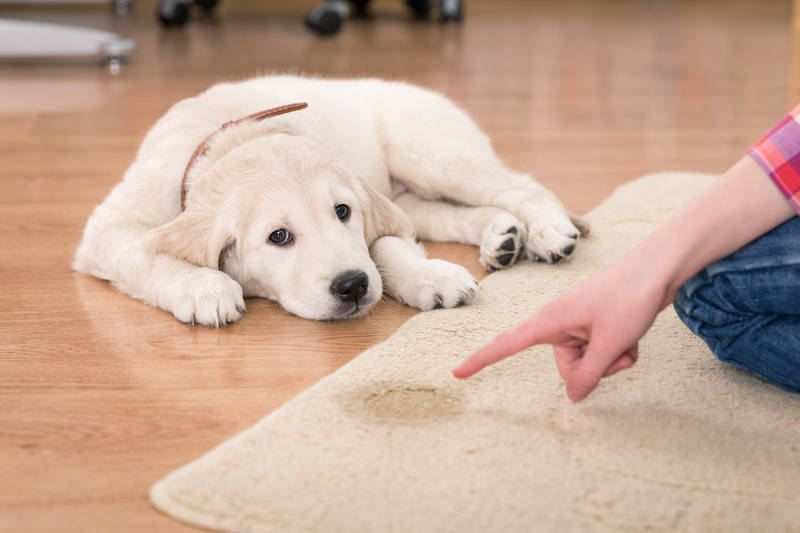Smart Strategies for a Mold-Free Bath Experience
Posted on 04/07/2025
Mold in bathrooms is a common concern for homeowners and renters alike. This unsightly and sometimes hazardous fungus thrives in damp, humid environments, making bathrooms the ideal breeding ground. However, with the right mold prevention strategies and proactive daily habits, you can enjoy a fresh, healthy, and mold-free bathing experience. In this comprehensive article, we'll explore a variety of practical tips, expert insights, and smart solutions to keep your bathroom sparkling clean and safe from mold's grasp.
Understanding Mold in the Bathroom: Causes and Risks
Before delving into effective ways to prevent mold in bathrooms, it's essential to understand what causes mold and why it's a problem. Mold is a type of fungus that reproduces through tiny airborne spores. Given the right conditions--warmth, moisture, and a food source like soap residue or grout--it can colonize quickly.
Common Causes of Bathroom Mold
- High Humidity: Hot showers, poor ventilation, and steam all raise humidity levels, promoting mold growth.
- Poor Ventilation: Bathrooms without adequate airflow trap moisture, providing the perfect environment for mold to thrive.
- Leaking Fixtures: Dripping faucets, leaking pipes, and water seeping behind tiles create hidden damp areas.
- Ineffective Cleaning: Irregular cleaning leaves behind soap scum, dead skin cells, and other substances that nourish mold.
Health and Structural Risks
Mold exposure can cause a range of health issues, including allergic reactions, asthma flare-ups, and respiratory problems. In severe cases, certain mold species can produce mycotoxins, which are harmful to both humans and pets. Beyond health, mold can damage paint, weaken grout, and cause wood to rot, potentially resulting in costly repairs. Keeping your bath mold-free isn't just about aesthetics--it's about protecting your home and your well-being.

Top Strategies for a Mold-Free Bath Experience
Thankfully, taking a multi-layered approach to bathroom mold prevention pays off. Here are the most effective, smart strategies for a mold-free bath experience:
1. Boost Bathroom Ventilation
- Use an Exhaust Fan: Ensure your bathroom has a high-quality exhaust fan. Run it during and for at least 15-20 minutes after showering to remove moist air.
- Open Windows: If possible, open a window to allow fresh air circulation. Cross-ventilation helps dry out damp spaces quickly.
- Leave Doors Open: Keep the bathroom door ajar post-shower to enhance airflow and reduce lingering moisture.
2. Control Humidity Levels
- Install a Dehumidifier: In particularly damp climates, a small bathroom dehumidifier effectively maintains optimal humidity below 50%.
- Monitor with a Hygrometer: Consider using a digital humidity monitor to keep an eye on moisture levels.
- Limit Shower Time: Shorter, cooler showers produce less steam, reducing the moisture burden.
3. Prioritize Regular Cleaning
Routine cleaning is your first line of defense against mold:
- Scrub Showers and Tubs: Clean grout, tiles, and tub surfaces weekly with a mold-fighting bathroom cleaner or a vinegar-water mixture.
- Disinfect Drains: Pour boiling water down the drain weekly, or use a mixture of baking soda and vinegar to suppress mold and odors.
- Wash Shower Curtains and Liners: Launder cloth curtains regularly, and replace or clean plastic liners to prevent mold buildup.
4. Choose Mold-Resistant Materials
- Opt for Mold-Resistant Paint: Anti-microbial bathroom paints create a protective barrier against mold and mildew on ceilings and walls.
- Upgrade to Mold-Resistant Grout: When re-tiling, use epoxy or other mold-resistant grouts that are less porous and less prone to mold colonization.
- Select Non-Porous Surfaces: Glass, porcelain, and specially treated bathroom surfaces discourage mold adherence compared to porous materials.
5. Eliminate Excess Water Promptly
- Squeegee After Use: Use a squeegee to wipe down shower walls and glass doors after every use to minimize water sitting on surfaces.
- Fix Leaks Immediately: Attend to any plumbing issues, dripping taps, or leaking toilet seals without delay.
- Dry Towels and Mats: Always hang towels and bathmats to dry in a well-ventilated area rather than letting them linger on the floor.
6. Maintain Your Bathroom Environment
- Declutter: Reduce the number of items stored in the shower or on bathroom shelves. Mold loves to grow beneath bottles and containers.
- Check for Hidden Moisture: Regularly inspect areas behind toilets, under sinks, and around vents for signs of water damage or mold patches.
- Seal Grout and Caulk: Reapply grout sealer annually to repel moisture. Replace cracked caulk to block water intrusion.
Advanced and Sustainable Mold Prevention Techniques
Natural Mold-Fighting Solutions
- Vinegar Spray: Fill a spray bottle with undiluted white vinegar. Mist tiles and grout weekly to kill and help prevent mold spores.
- Hydrogen Peroxide: Spray 3% hydrogen peroxide on affected areas and let it sit before scrubbing. This eco-friendly solution is tough on mold but safe for the environment.
- Essential Oils: Tea tree oil and lavender oil have natural anti-fungal properties. Add a few drops to your cleaning solution for an extra mold-fighting boost.
Smart Technology for Mold-Free Bathrooms
- Humidity Sensors: Smart sensors monitor moisture levels and alert you when readings are too high, reminding you to ventilate or dehumidify.
- Automated Fans: Modern exhaust fans can be programmed to run based on humidity or set to automatically turn on with the light switch, ensuring you never forget.
- Leak Detectors: Wireless sensors placed under sinks or by the toilet can immediately notify you if a leak occurs, minimizing hidden water damage.
Sustainability and Mold Prevention
Reducing your environmental impact doesn't have to come at the expense of effective mold prevention. Choose plant-based, non-toxic cleaners that are both safe and tough on mold, reuse microfiber cloths, and opt for energy-efficient ventilation systems. Sustainable choices contribute to a healthy home and a healthy planet!
Signs of Mold in Your Bathroom
- Visible spots: Black, green, or brown patches on grout, caulking, ceilings, or around windows.
- Musty odor: A persistent earthy or damp smell, especially after the room has dried out.
- Discoloration: Yellowing or darkening of surfaces, often as a precursor to visible mold growth.
- Allergy symptoms: Frequent sneezing, coughing, or skin irritation that worsens in the bathroom may be a sign of mold sensitivity.
If you spot any of these signs, take prompt action! Detecting mold early makes it much easier to address and prevents the spores from spreading to other areas of your home.
Safe Mold Removal Steps
If you discover mold in your bathroom, follow these safe removal techniques:
- Wear Protection: Use gloves, goggles, and a mask to avoid contact with spores.
- Use the Right Cleaner: For small patches, a solution of bleach and water (1:10 ratio), white vinegar, or a commercial mold remover works well.
- Scrub Thoroughly: Use a stiff brush on tiles, grout, and other hard surfaces.
- Dry the Area: After removal, thoroughly dry the cleaned area to prevent the return of mold.
- Dispose of Affected Items: Remove and replace any materials (like drywall or insulation) heavily infested with mold.
*For extensive infestations or recurring mold problems, consult a professional mold remediation service.*
Building Habits for a Mold-Free Bath Experience
- Establish a Cleaning Routine: Set weekly reminders for deep cleaning and quick daily wipes of high-moisture areas.
- Promptly Address Spills & Leaks: Never leave standing water for long periods, and respond to leaks immediately.
- Educate Your Household: Teach everyone to use the exhaust fan, squeegee after showers, and hang towels correctly.
- Stay Alert: Periodically check for signs of humidity, drips, or discoloration in corners and behind bathroom appliances.

Frequently Asked Questions About Mold in Bathrooms
How can I prevent mold from returning after cleaning?
Staying proactive is crucial: Maintain excellent ventilation, keep surfaces dry, routinely seal grout and caulk, and clean regularly with anti-microbial products to hinder mold regrowth.
Is it safe to use bleach for mold removal?
Bleach can kill surface mold, but it does not penetrate porous materials well. Use it carefully, ventilate thoroughly, and consider vinegar or hydrogen peroxide for safer, eco-friendly alternatives.
Are there mold-resistant bathroom fixtures I can install?
Yes! Look for mold-resistant shower curtains, liners, paint, and caulk when remodeling or updating your bathroom. Porcelain, glass, and stainless steel are also excellent mold-repelling materials.
What is the ideal humidity level for a mold-free bathroom?
Keep humidity below 50%. Use a humidistat or hygrometer to monitor, and use your exhaust fan or a dehumidifier as needed.
Conclusion: Enjoy a Healthier, Cleaner Bath Every Day
Maintaining a mold-free bath experience is about adopting smart strategies, building healthy habits, and using the right tools and products. By understanding the causes and risks of bathroom mold, optimizing your environment, and staying diligent with cleaning and maintenance, you can enjoy a bathroom that's not only beautiful but also safe and inviting.
Whether you're taking small steps like wiping down tiles daily, or investing in high-tech mold prevention solutions, your efforts will pay off in comfort and peace of mind. Say goodbye to mold and hello to your freshest, cleanest bath experience ever!
- Stay vigilant with cleaning and inspections.
- Invest in ventilation, quality materials, and smart technology.
- Act quickly at the first sign of moisture or mold.
Let these smart strategies for a mold-free bath experience transform your bathroom into a sanctuary of wellness, relaxation, and unparalleled cleanliness!




